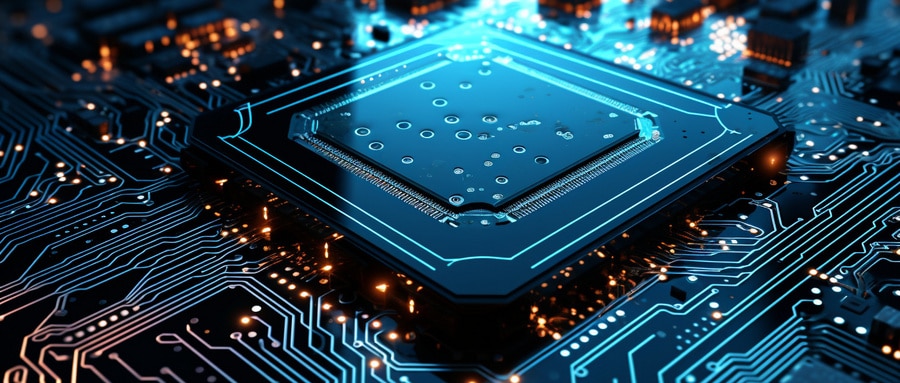Rigid-Flex PCBs: Unfolding the Future of Advanced Circuitry
At the core of technological evolution lies an extraordinary innovation: Rigid-Flex Printed Circuit Boards (PCBs). PCBs revolutionized electronic circuit designs when first invented; since then, however, advances have combined rigidity and flexibility into Rigid-Flex PCBs for greater miniaturization and flexibility needs in electronics – hence its birth. In this article we’ll take an exploration journey through Rigid-Flex PCBs by understanding their concept, benefits, designing processes, fabrication costs and their importance in modern electronics.
To understand rigid-flex PCBs, it’s essential to grasp both their parent types – rigid PCBs and flex PCBs – first. Rigid PCBs, known for their stability and robustness, have long been considered workhorses in electronics circuit design while their flexible counterparts flex PCBs were seen as innovators of flexible electronics circuit design. By combining their respective strengths into Rigid-Flex PCBs we create the ideal combination between stability from rigid PCBs and flexibility from both types; their strengths become manifest as multilayered flexible circuit substrates attached rigid board exteriors resulting in multiple layered flexible circuit substrates attached rigid board exteriors – an embodiment of perfect balance!
Rigid-Flex PCBs offer numerous advantages that range from space optimization, enhanced reliability, reduced system costs and enhanced performance to their unique flexibility that enables them to fit into limited spaces allowing smaller device designs with reduced interconnection hardware; helping improve system reliability by decreasing potential connection failures. The benefits are almost too numerous to count! These PCBs can optimize space, reliability, system costs and performance. With their ability to bend, fold and twist easily they allow customization in limited areas with reduced interconnection hardware requirements; ultimately leading to smaller device designs than before thereby opening up more compact device designs within limited spaces allowing reduced system costs as well as performance boost.
Designing a Rigid-Flex PCB may appear complex at first, given its need to balance rigidity and flexibility while upholding functional integrity. But with modern software tools at our fingertips and guidance from industry professionals, the process can become efficient and error-free.
Fabricating Rigid-Flex PCBs is not an effortless endeavor. It involves several complex procedures, such as material selection, etching, drilling and plating – yet its outcome justifies all efforts involved.
Price plays an essential part in choosing Rigid-Flex PCBs as a cost-cutting solution, and while their unit cost may be slightly higher than traditional boards, this is offset by their overall reduced system assembly and maintenance expenses, providing an effective cost solution overall.
Rigid-Flex PCB technology has opened up new horizons in electronic design and manufacture. From space explorations to medical equipment, wearables to smartphones – its application keeps growing, further cementing its place within industry. Looking ahead, Rigid-Flex PCBs appear as indispensable pieces in evolving PCB designs for tomorrow’s technological advances.

While Rigid-Flex PCB technology may appear complex and daunting, understanding its mechanics, importance, and influence on shaping our technological infrastructure can be an enthralling endeavor. Thanks to this comprehensive guidebook, the future of Rigid-Flex PCBs looks bright – and unimagined possibilities lie ahead for them.
Stay tuned as we unveil and appreciate this monumental innovation for its impact on future electronics.
Rigid-Flex PCB FAQ:
- Q: What is a rigid-flex printed circuit board?
A: A rigid-flex PCB combines areas of flexible PCB and rigid PCB, allowing for both flexibility and the ability to hold shape where necessary. - Q: Where are rigid-flex printed circuit boards often used?
A: Rigid-flex printed circuit boards are often used in aerospace, automotive, medical, and telecommunications applications where space is at a premium or movement is required. - Q: How does a rigid-flex printed circuit board enhance design capabilities?
A: By allowing the designers to create more complex shapes and alignments, maintaining integrity in moving parts, and reduce the need for connectors and wires. - Q: Are rigid-flex printed circuit boards more expensive to manufacture?
A: Yes, due to the complex fabrication process, rigid-flex printed circuit boards can be more expensive than both flexible and rigid PCBs. - Q: How does a rigid-flex printed circuit board help in equipment size reduction?
A: Rigid-flex printed circuit boards can be folded or continuously flexed while maintaining shape in necessary areas, thus they can fit into smaller spaces. - Q: Does it require special software to design a rigid-flex printed circuit board?
A: While basic PCB design tools can be used, some PCB design software offers specific functionality for designing rigid-flex circuits, making the process easier and more accurate. - Q: Is a rigid-flex printed circuit board durable?
A: Yes, rigid-flex printed circuit boards are built to withstand a lot of stress, and their construction can even increase device lifespan by reducing connection points. - Q: Can a rigid-flex printed circuit board be repaired?
A: While difficult, it is possible to perform some repairs on a rigid-flex printed circuit board, but often it’s easier and more cost effective to replace the entire board. - Q: What materials are used for a rigid-flex printed circuit board?
A: Multiple layers of flexible substrate material and conductive ribbons are usually used. These are bound together with a prepreg adhesive and copper in areas where rigidness is needed. - Q: Are there any specific handling measures for rigid-flex printed circuit board?
A: Yes, these boards are more sensitive to bending and flexing than traditional PCBs, and thus need to be handled with care to avoid damage.























